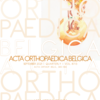Isthmic spondylolisthesis treated with circumferential arthrodesis (ALIF and posterior fixation): correction, fusion and indirect decompression
Isthmic spondylolisthesis ; circumferential fusion ; indirect decompression
Published online: Feb 16 2022
Abstract
There is no consensus regarding the choice of the surgical technique for isthmic spondylolisthesis treatment, although they all aim to a common goal, achieving fusion at the index level while restoring an appropriate lordosis and remove potential radicular compression. Analyze outcome of circumferential arthrodesis (CA) with ALIF (Anterior Lumbar Interbody Fusion) and pedicle screw fixation for the treatment of all-grade isthmic spondylolisthesis, with indirect neurological decompression. Retrospective study of isthmic spondylolisthesis treated with CA, with one-year follow-up. Clinical scores were collected at one year: VAS-L, VAS-R and ODI. Pelvic parameters, L4-S1 lordosis and at index and adjacent levels, and lumbo-sacral angle (LSA) were measured pre- and post-operatively and at last follow-up. Foraminal surface and diameters were measured pre- operatively and at follow-up on CT-Scan. Level of evidence: IV. 87 patients were included. Mean VAS-L was 2.3, mean VAS-R was 1, and mean ODI was 13.8%. 10% of the patients presented a high-grade spondylolisthesis and 50% a grade II. Mean lordosis at index level shifted from 6° to 18°, L4-S1 lordosis increased from 37 to 45° and LSA shifted from 116 to 125° (p<0.001). The foraminal surface increased from 50mm 2 to 70mm 2 at last follow-up mostly through the supero-inferior diameter, shifting from 7.4mm to 9.5mm (p<0.001). In LSA<90° group, mean correction was 20° at index level, 13° at L4-S1 and 21° for LSA versus 11°, 8° and 8° respectively in LSA>90° group (p<0.001). Fusion rate was estimated at 96.5%. One infection, 5 sympathetic dysfunctions, one retrograde ejaculation, one iliac vein injury, one incisional hernia, one lateral femoral cutaneous nerve injury and two adjacent syndromes have been noted. CA is an efficient technique for the treatment of isthmic spondylolisthesis of all grades, with an acceptable rate of complications. It allows a restoration of the regional lordosis as well as a foraminal widening, avoiding additional decompression.
